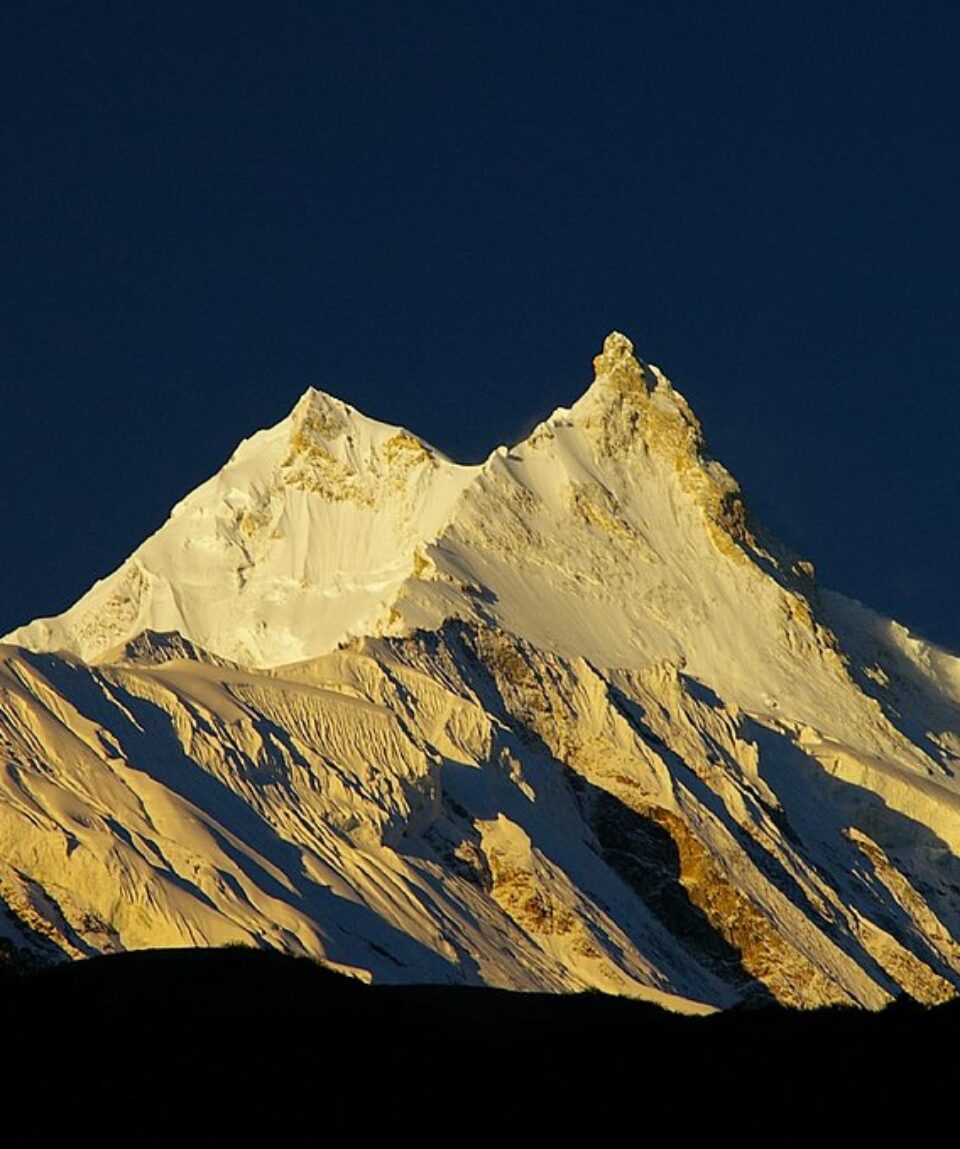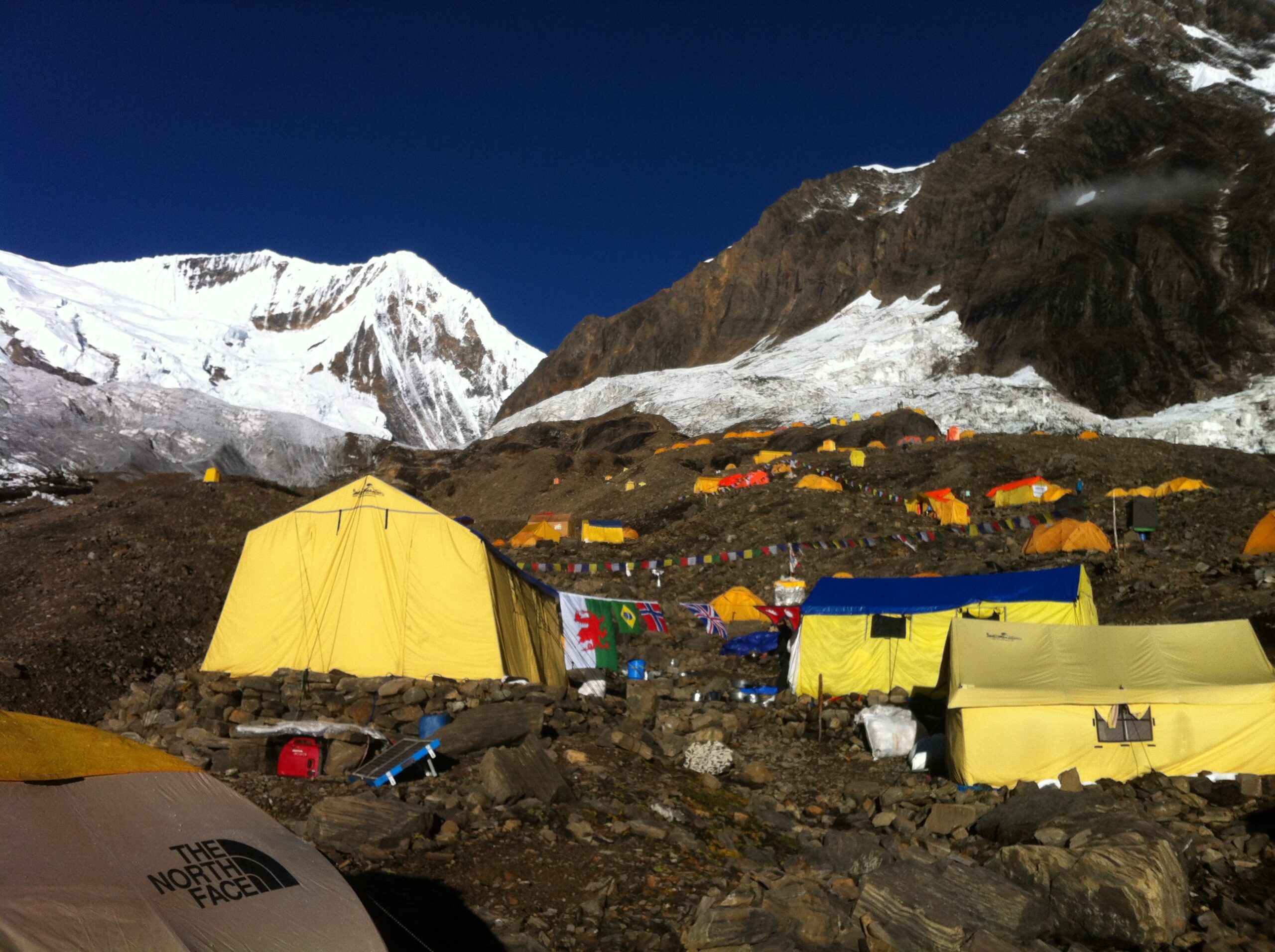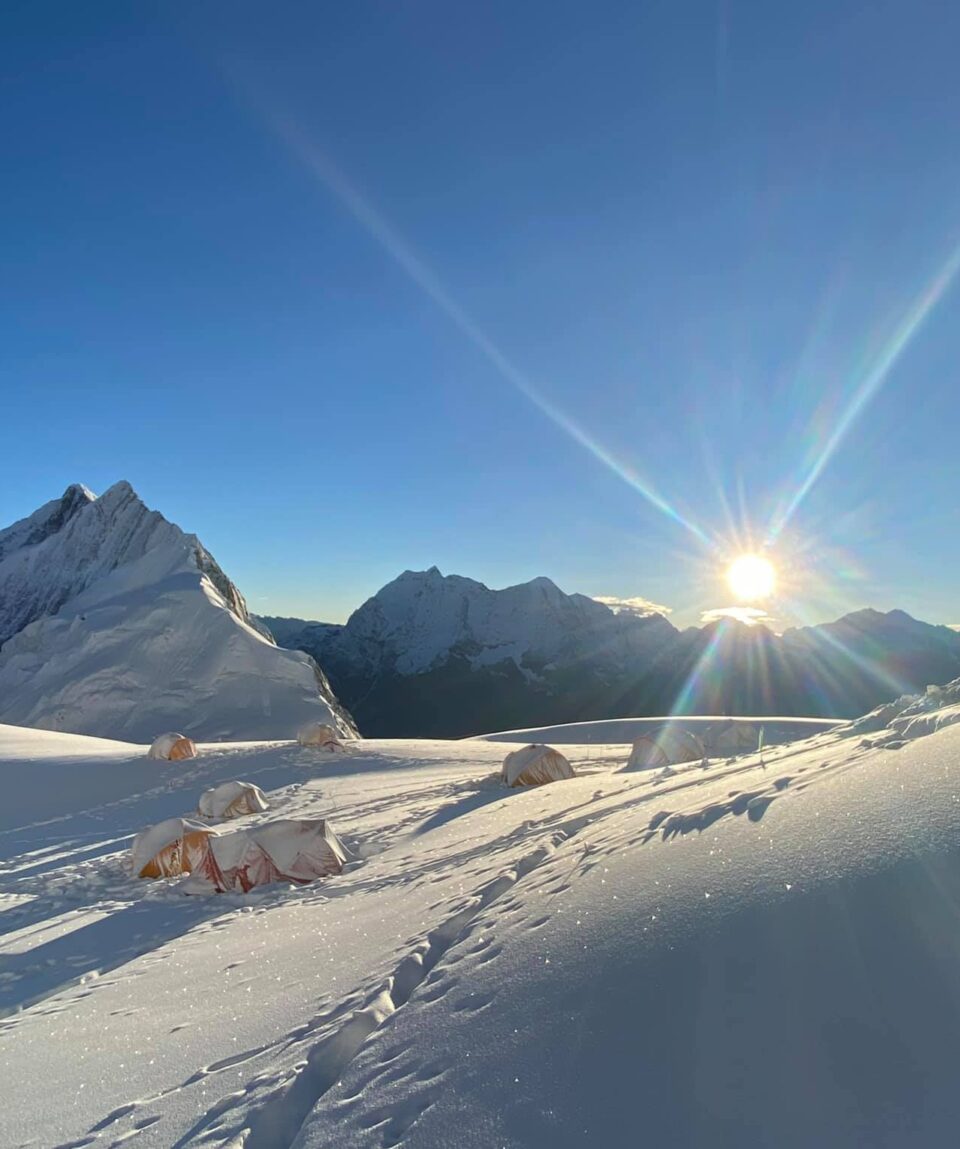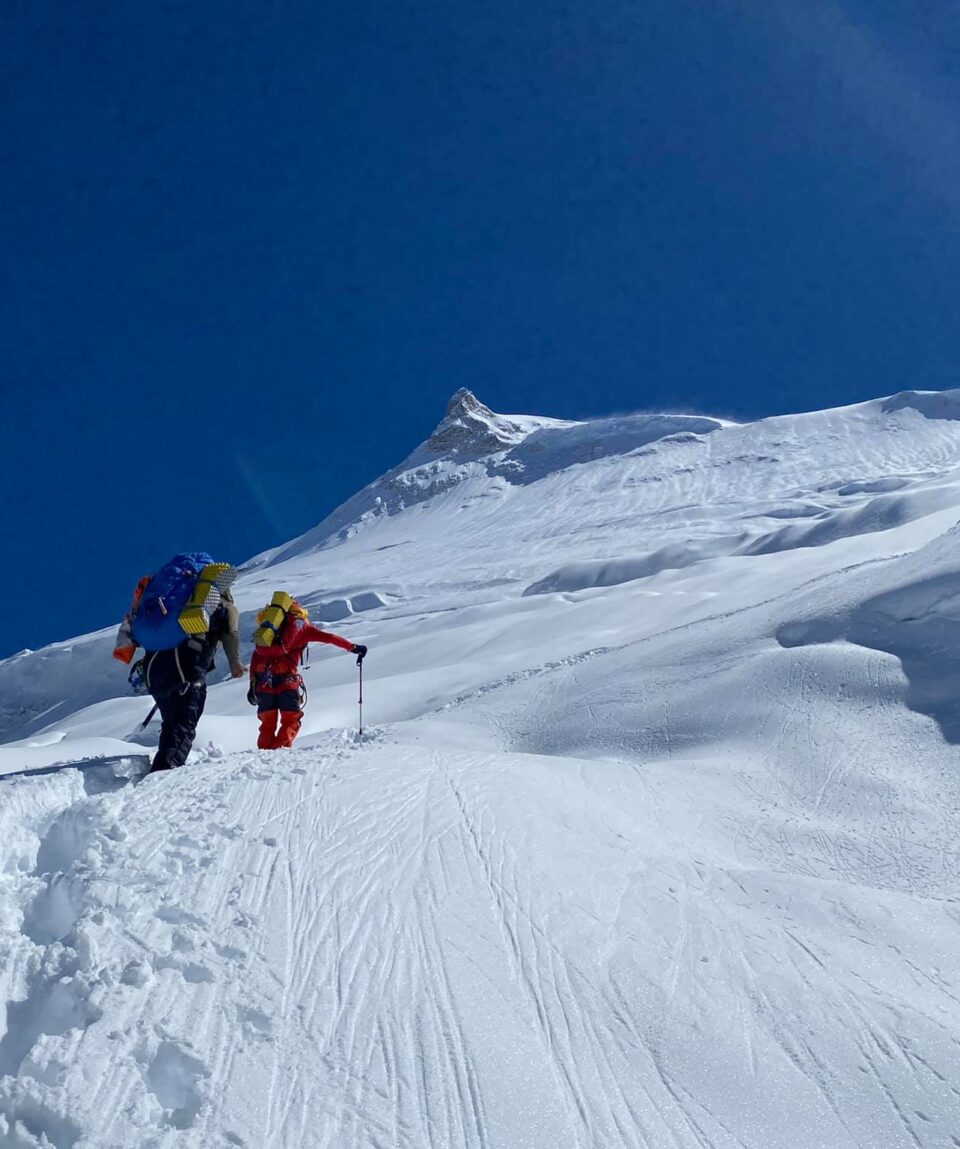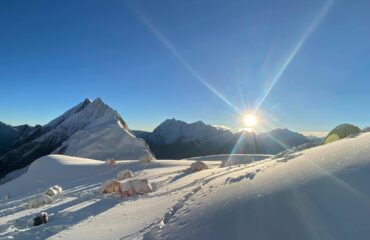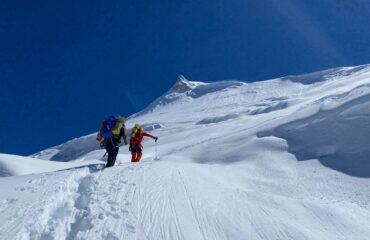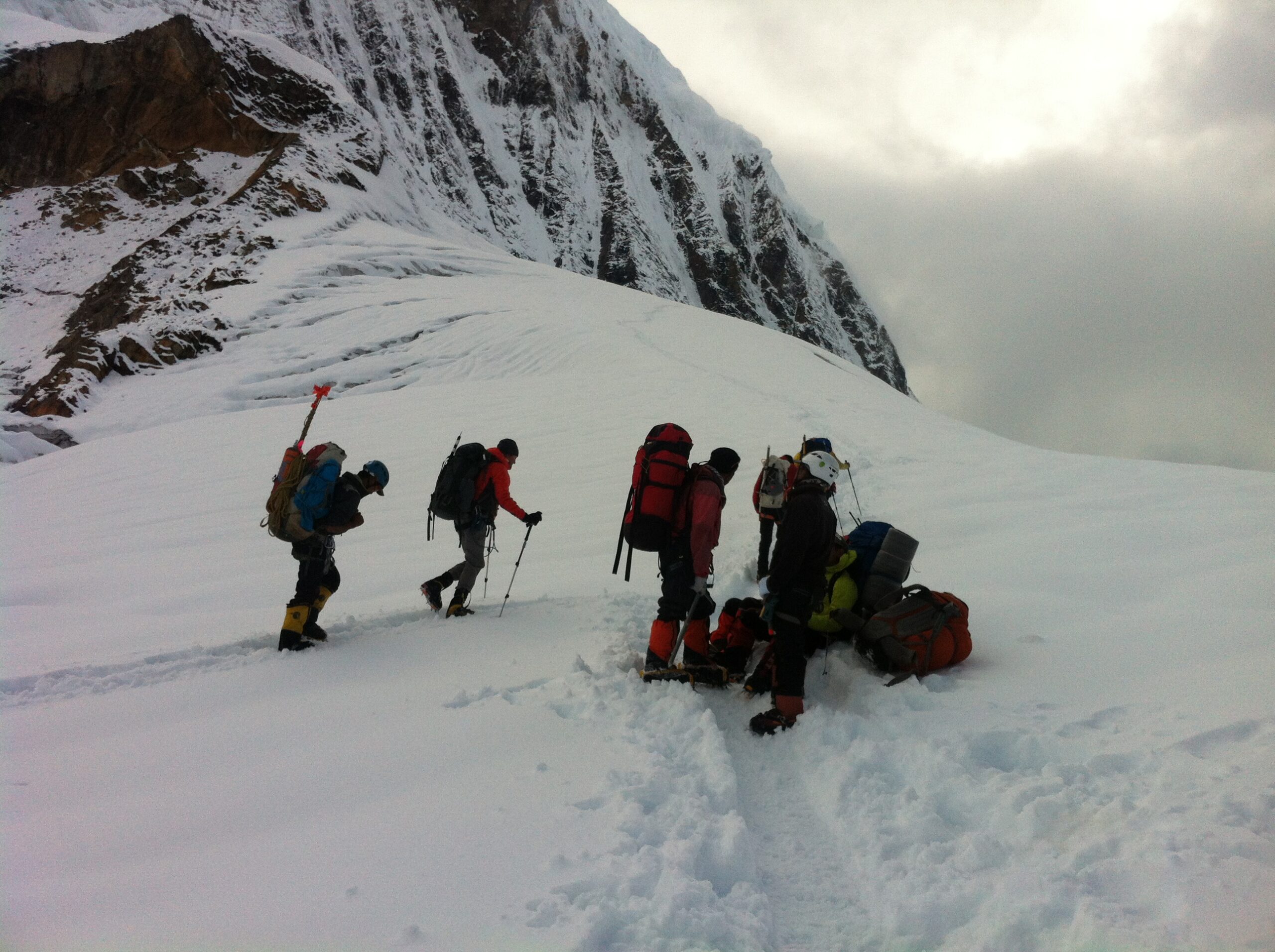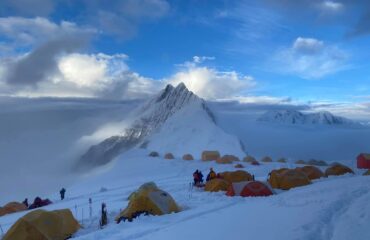Manaslu Expedition
fromClimb the stunning world’s eighth-highest mountain that is an ideal expedition for those looking to climb an 8,000er, or in preparation for Everest.
-
Reviews 0 Reviews0/5
-
Vacation Style Holiday Type
-
Hiking
-
Mountain
-
-
Activity Level Extreme
-
Group Size Medium Group
Flanked by the Annapurna to the west and Ganesh Himal to the east, Manaslu is one of the most graceful of 8000m giants. Manaslu (8163m), a name derived from the Sanskrit word manasa, meaning “Mountain of the Spirit”, is the eighth highest peak in the world. The mountain can be approached from various sides but most attempt it from Samagaon along the Budhi Gandaki valley. Toshio Imanishi and Gyalen Norbu, who were members of a Japanese expedition, first climbed it on 9 May 1956. It is said: The climb to the top of Manaslu poses moderate technical difficulty. But the actual difficulty lies in the fact that the peak is remotely located.
Mount Manaslu is an excellent choice if you consider climbing an accessible eight-thousander. Its altitude is significant, but not as intimidating as those of Kanchenjunga or Everest. You have a fair chance of reaching the summit, taking into account the success rates of Manaslu ascents.
- Arrival and Departure: Airport – Hotel transfers – Airport (Pick Up and Drop).
- Hotel Accommodation in Kathmandu: 4 nights hotel (3 Star Category) in Kathmandu on bed & breakfast Plan- on Twin Sharing basis
- Permit: Expedition Royalty and permit of Nepal Government to climb Mt. Manaslu, Restricted area Permit, TIMS Card, Conservation area entry permits and fee.
- Liaison Officer:1 Government Liaison officer for Manaslu Expedition
- Garbage Management: Stool Shipment Transfer & Garbage Deposit fees.
- Insurance: Medical & Emergency rescue Insurance for all involved Nepalese staff during the trek and expedition.
- Member transportation:
-Land Transportation: (by Jeep, as per itinerary) - Expedition Stuffs Transportation: Necessary all equipment Transportation for all Members and Staffs from and to Kathmandu
- Member Luggage: Up to 60 Kg per member for personal baggage during the trek carried by porters.
- Food & Lodging: All meals while on the expedition (breakfast, lunch, dinner, tea, and coffee and accommodation
- Porter: Porter per member up to Base camp and from base camp as required.
- Base Camp Staff: Experienced and well-trained Base camp Cook & kitchen Helpers as required.
- Staff Salary and allowance: All Nepalese staff & porter’s daily wages, salary, equipment, foods & insurance)
- Base Camp Tent: Tents with comfortable mattresses at the advanced base camps, and above the advance camp, two members have one tent. (In advance base camp 1:1 tent and above base camp 2:1 tent as per safety.)
- Base Camp Equipment: At Base camp: foam mattresses and pillow per member, 1 Dinning Tent, 1 Kitchen Tent, 1 Communication tent, 1 Toilet & 1 Shower Tent, 1 Staff Tent, 1 Tent for Nepalese base camp staff, Store tents, Tables & chairs & all necessary cooking gears.
- Heater: Heater for base camp in each Dining and all necessary camp.
- Solar/Generator/Light:1 Solar panel or Generator for battery charge and light at base camp for use.
- High Altitude Climbing Sherpa: 1 veteran and Government Licensed Sherpa per member. (1 Member: 1 Sherpa)
- Climbing Sherpa Salary & Allowance: Climbing Sherpa Salary, Equipment, Food,clothing, and insurance.
- Oxygen Bottle (O2): Summit Oxygen: 2 oxygen bottles (4 ltrs.) for each member and 1 oxygen bottle for each high-altitude Sherpa.
- Oxygen Mask & Regulator: 1 Set of Summit Oxygen mask and regulator for each member and high-altitude Sherpa, which has to be returned after the expedition.
- Back up Oxygen Cylinder, mask, and regulator (with appropriate charge).
- Rope Fixing Team: Icefall charges, Summit rope cost charged by Expedition Operators Association, and Himalayan Rescue Association medical insurance charged in the package cost.
- High camp service: High Altitude Tent, Necessary cooking EPI gas, cooking pots for a member, High food for a member, Sherpa, all climbing and other crews at (C1) (C2) (C3) and (C4). Group climbing gears, fixed and dynamic rope during the climbing period as required.
- Satellite Phone for emergency communication carried by Sherpa, also available for a member for emergency
- Radio set: For communication between camps
- Certificate: Manalsu climbing certificate issued by MoCTCA (after climbing Mt. Manaslu successfully).
- International airfares
- International Airport Departure Tax and visa fees
- Trekking and climbing Equipment
- Major meals, Lunch, and dinner during your stay in Kathmandu
- Any type of personal expenses, such as alcoholic beverages and drinks, phone, and laundry.
- Rescue & travel insurance, trip cancellation costs, accident or health emergency, evacuation, loss, theft or damage to baggage, and personal effects.
- We strongly advise you to take out personal travel insurance.
- Tips & Gratuities to porters and guides
- Day 1 Depart Home Country
- Day 2 En Route (Transit)
- Day 3 Arrival in Kathmandu and transfer to hotel in Kathmandu (1350M/4430ft)
- Day 4 Casual day, briefing and trip preparation day
- Day 5 Drive from Kathmandu to Arughat (950m/3117ft) to Sotokhola (1165/3822ft) 7hrs.
- Day 6 Trek from Sotikhola to Machhakhola(1330m/4364ft) 6hrs
- Day 7 Trek from Machhakhola to Jagat(1350m/4430ft) 4hrs.
- Day 8 Trek from Jagat to Dang(2310m/7579ft) 6-7hrs
- Day 9 Trek from Dang to Namrung(2550m/8366ft) 6hrs.
- Day 10 Trek from Namrung to Lho (3150m/10334ft) 5hrs
- Day 11 Trek from Lho to Sama Gaun(3780m/12401ft) 4hrs.
- Day 12 Rest and acclimatization day at Sama Gaun (3780m/12401ft)
- Day 13 Trek from Sama Gaun to Manaslu Base Camp (4700m/15420ft) 4hrs.
- Day 14 Rest day and get organized at BC
- Day 15 Puja Ceremony
- Day 16 Acclimatization and Rotation period for higher Camps
- Day 17 Acclimatization and Rotation period for higher Camps
- Day 18 Acclimatization and Rotation period for higher Camps
- Day 19 Acclimatization and Rotation period for higher Camps
- Day 20 Acclimatization and Rotation period for higher Camps
- Day 21 Acclimatization and Rotation period for higher Camps
- Day 22 Acclimatization and Rotation period for higher Camps
- Day 23 Acclimatization and Rotation period for higher Camps
- Day 24 Acclimatization and Rotation period for higher Camps
- Day 25 Acclimatization and Rotation period for higher Camps
- Day 26 Acclimatization and Rotation period for higher Camps
- Day 27 Base Camp to Camp I
- Day 28 Camp I to Camp II
- Day 29 Camp II to Camp III
- Day 30 Camp III to Camp IV
- Day 31 Camp IV to Summit and return to Base Camp
- Day 32 Reserved day for summit
- Day 33 Reserved day for summit
- Day 34 Reserved day for summit
- Day 35 Reserved day for summit
- Day 36 Cleanup and Depart Base camp
- Day 37 Fly back to Kathmandu via helicopter
- Day 38 Reserved day in Kathmandu
- Day 39 Casual day and sightseeing
- Day 40 Transfer to airport for international flight
- Day 41 En Rote (transit )
- Day 42 Back to Home Country
Having the right equipment on your Manaslu expedition will make almost as much difference to your success, safety, comfort, and enjoyment as any physical training you do. It is essential that you take the time to acquire the correct gear; don’t wait for the last minute to find out your local shop doesn’t have your size. This equipment is expensive, but you can often find great sales online and at your local gear store. The purpose of this gear list is to help guide your purchases.
This list is a guide. While you are required to bring everything on this list, there are numerous options, brands, and versions of each piece
of equipment, unless otherwise noted. Using our current suggested brand list we encourage you to shop around, do research, use your
experience and the listed features to find the best gear for you.
During your time in the mountains, you will encounter a very wide range of temperatures and weather conditions. At one end of this range is the pleasantly warm and beautiful low land, while at the other end of the spectrum is found the cold and often windy weather of the highest peaks in the world. The equipment you bring must function well in a wide variety of conditions. Your clothing should be warm, lightweight, dry quickly, and allow good freedom of movement. The layering principle, based on several thin layers of insulation
(rather than one thick one), covered with an outer weatherproof shell, meets these needs well.
A Note on Packing
For your international flights we recommend that you pack all your equipment in your two duffle bags. Do not simply pack your
backpack (since the straps can be damaged by the baggage handling machines). It is important to lock these bags for their trip.
Depending on the airport, you may be able to put your travel locks on after TSA has searched the bags. If not, Lock the bags with Zip
Ties. If the TSA cuts off the zip-tie to search your bag, they will replace it. You will still need the travel locks to lock your bags in the hotel
and during the expedition.
Generally, you will take two duffels up to Base Camp, and leave one in the hotel in Kathmandu with your belongings for your time in the
city. Your trek in duffel will only be accessible in the evenings (with items such as changes of clothing, sleeping bag), and your day pack
will hold vitals such water, layering, blister kit, and camera. Your climbing gear can be sent on up to Base Camp in a third duffel.
Climbing Equipment
- Ice Axe with a leash. General mountaineering tool (Black Diamond Raven or Raven Pro
- Step-in bindings with anti-balling plates (Black Diamond Sabretooth Pro with ABS)
- Alpine climbing harness. Harness should fit over all clothing and down suit and have gear loops (Black Diamond Bod or Alpine Bod)
- Locking Carabiners (2) Twist lock preferred over screw gate (Black Diamond Rocklock Twistlock)
- Regular Carabiners (4) (Black Diamond Oval)
- One right or one left (Black Diamond nForce or Petzl Ascension)
- Rappel/Belay device (2) Figure 8 no ATC’s (Black Diamond Super 8)
- Climbing Helmet (Black Diamond Half Dome or Petzl Erin Roc)
- Prussiks or Slings. Or bring 40 feet of flexible 6mm perlon or 1/2″ webbing to make into prussiks/slings
- Adjustable Trekking poles (optional) (Black Diamond Expedition Poles)
Technical Clothing
- Lightweight Long Underwear (2-3) Tops and bottoms. Capilene, other synthetic or wool. No Cotton (Mountain Hardwear Micro Power
- Stretch Tight & Micro Power Stretch Zip T)
- Heavyweight Long Underwear. Top and bottom. Expedition weight Capilene (Mountain Hardwear Power Stretch Tight & Zip T )
- Lightweight Nylon Pants (1 -2)
- Short Sleeve Synthetic Shirt (1-2) (Mountain Hardwear Wicked Lite T)
- Synthetic/Soft Shell Jacket with full-zip (Mountain Hardwear Monkey Man Jacket)
- Synthetic/Soft Shell Pants with full-zip (Mountain Hardwear Coolidge Pant)
- Insulated Synthetic Jacket (optional) (Mountain Hardwear Hooded Compressor Jacket)
- Insulated Synthetic Pants with side zippers (optional) (Mountain Hardwear Compressor Pant)
- Expedition Down Parka (Mountain Hardwear Absolute Zero Parka)
- Expedition Down Suit (Mountain Hardwear Absolute Zero Suit)
- Hard Shell Jacket with hood (Mountain Hardwear Axial Jacket)
- Hard Shell Pants with zippers (Mountain Hardwear Beryllium Bibs)
Handwear
- Lightweight Synthetic gloves (2) Should fit inside mitts or gloves. Lighter Capilene preferred (Mountain Hardwear Butter Liner)
- Heavyweight Synthetic or Soft Shell gloves (2) (Outdoor Research PL400 Gloves or Mountain Hardwear Power Stretch)
- Expedition Shell Mitts. Should be big enough so that synthetic gloves fit inside pile liners (Outdoor Research Alti Mitt or Mountain Hardwear Absolute Zero Mitt)
Headwear
- Bring spare bulbs & batteries (Black Diamond Icon or Petzl Myo)
- Glacier glasses (Julbo Explorer or Nomad) If you wear glasses we recommend prescription glacier glasses
- Baseball cap or sun hat (2)
- Ski Goggles (2) One pair 100% UV & IR and the other with clear lenses for summit day start (Julbo Excel or Gravit)
- Balaclava (2) One heavyweight and one lightweight (Mountain Hardwear or Outdoor Research)
- Warm synthetic or wool hat (2) (Mountain Hardwear or Outdoor Research)
- Bandanas or headscarf (2)
- Neoprene face mask (optional)
Personal Equipment
- Expedition Backpack. 4,000 – 5,000 cubic inch (Black Diamond Quantum or Mountain Hardwear South Col)
- Trekking Backpack 2,000 – 2,500 cubic inch (optional) (Black Diamond Mountain Hardwear Dihedral Pack )
- Sleeping Bag -40F. Expedition down insulated rated to at least -40F for high camps (Mountain Hardwear Ghost SL)
- Sleeping Bag -20F. Expedition down insulated rated to at least -20F for base camp (Mountain Hardwear Wraith SL)
- Closed-Cell foam pad (2) Full length (Ridgerest)
- Plastic Cup. Plastic insulated mug with lid
- Lexan tough plastic
- Sunscreen (2) SPF 40 or higher
- Lipscreen (2) SPF 20 or higher
- Water Bottle (2) 1 Liter wide-mouth bottles (Nalgene)
- Water Bottle Parka (2) For the above bottles (Nalgene or Outdoor Research)
- Pee Bottle (2) 1 Liter wide-mouth bottles (Nalgene)
- Pee Funnel (for women)
- Thermos 1 Liter capacity stainless steel vacuum bottle
- Trash Compactor bags (4) To line stuff sacks and one large to line pack
- Compression Stuff Sacks (2) For sleeping bags and clothing
- Duffel Bag (2) Large size with locks (Mountain Hardwear Expedition Duffel or Black Diamond Hueys)
- Small personal first-aid kit and personal medications
Note: This list is only a guide. We have included recommendations on certain clothing and equipment based on our experience.

